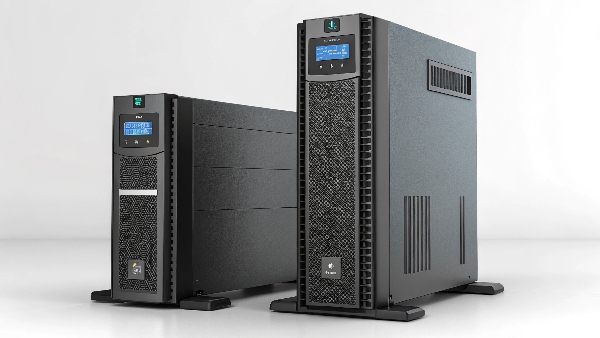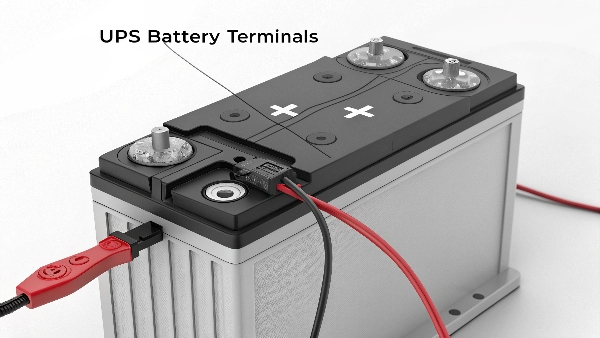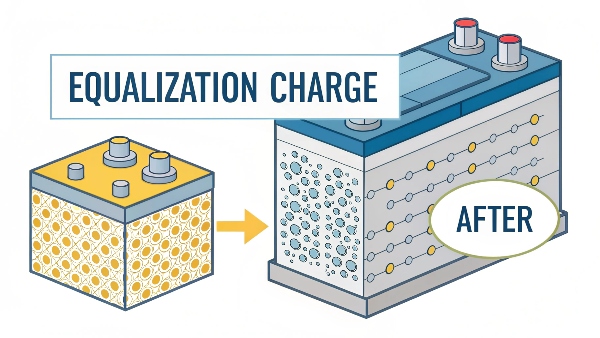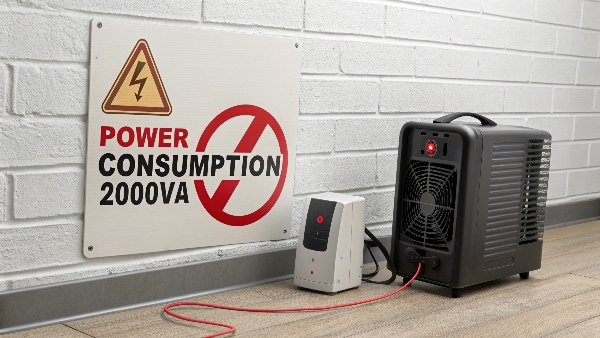Your current UPS is bulky, its batteries die too soon, and it's a hassle to maintain. This downtime risk for your critical equipment is a constant worry, impacting productivity and peace of mind.
A Lithium-ion UPS in the 1500-3000VA range offers longer life, a smaller footprint, and faster recharging. This makes it a smarter, more reliable choice for protecting essential electronics and reducing long-term costs.

Transition Paragraph:
Working at Daopulse for a decade, I've seen firsthand how crucial reliable power is for our clients, from Procurement Managers at large enterprises to System Integrators deploying critical infrastructure. The 1500-3000VA range is a real workhorse category for many applications. My insight here is that uninterruptible lithium battery power supplies come in tower and rack-mounted types. This flexibility is key because it means these advanced UPS systems can fit perfectly whether you have a dedicated server room requiring rack-mounted units or need a compact tower UPS beside a workstation. This adaptability, combined with lithium-ion's benefits, is a game-changer. Let's explore some common questions.
How do you check a UPS battery for polarity?
You're replacing your UPS battery but are unsure about connecting the terminals correctly. A wrong connection could damage your UPS or even be dangerous, causing sparks or system failure.
To check UPS battery polarity, look for "+" (positive) and "-" (negative) markings on both the battery terminals and the UPS connector wires. Red wires usually connect to positive, black to negative.

Dive deeper Paragraph:
Correct polarity is absolutely vital when connecting a battery. At Daopulse, we emphasize this in all our documentation and training. Reversing the polarity can, at best, blow a fuse in the UPS; at worst, it can damage the charging circuit, the inverter, or even the battery itself.
Identifying Polarity:
- Battery Markings: Most batteries have "+" and "-" symbols molded or printed directly onto the case near their respective terminals. Sometimes, the positive terminal might be slightly larger or have a red mark.
- Wire Colors: UPS internal wiring almost universally uses red for positive (+) and black for negative (-). Always match red to plus and black to minus.
- Connector Design: Some UPS battery connectors are keyed, meaning they can only be inserted one way, which helps prevent incorrect connections. However, not all are, especially with internal spade connectors.
If you are ever unsure, stop and consult the UPS manual or a qualified technician. I've heard stories from clients before they came to us, where a simple polarity mistake led to costly repairs. We design our UPS systems with clear markings and often use keyed connectors to minimize this risk for users like Mr. Li, ensuring smooth and safe battery replacement for their critical hospital infrastructure.
What does it mean to equalize a battery?
You've heard about "equalizing" batteries to improve their life or performance. You wonder if this is something you should be doing for your UPS battery, especially newer lithium-ion types.
Equalizing a battery is a deliberate overcharge performed on lead-acid batteries to reverse sulfation and balance cell voltages. This process is generally not needed or recommended for lithium-ion UPS batteries.

Dive deeper Paragraph:
Battery equalization is a maintenance procedure specific to certain types of lead-acid batteries, particularly flooded lead-acid batteries. The process involves applying a controlled overcharge for a short period.
Purpose of Equalization (for Lead-Acid):
- Reversing Sulfation1: Lead sulfate crystals can build up on the battery plates over time, reducing capacity. Equalization helps dissolve these crystals.
- Balancing Cell Voltages2: In a multi-cell battery, individual cells can drift in voltage. Equalization helps bring all cells to a similar state of charge.
- Preventing Stratification3: In flooded batteries, the electrolyte can separate, with heavier acid settling at the bottom. Equalization creates gassing that stirs the electrolyte.
For sealed lead-acid (SLA) batteries common in many older UPS systems, equalization is less common and, if done, must be carefully controlled. However, for the lithium-ion batteries used in our advanced UPS systems, like the 1500-3000VA models, this concept of equalization doesn't apply in the same way. Lithium-ion batteries have sophisticated Battery Management Systems (BMS) that actively balance cell voltages and monitor health. Attempting an "equalization" charge on a lithium-ion battery without specific BMS control could be dangerous and damage the battery. Our lithium UPS units are designed for minimal maintenance, a key value for our clients who need reliable, hassle-free solutions.
Can a UPS battery backup power a heater window unit?
The power's out, and it's cold. You have a UPS and wonder if you can plug in your small electric heater or window air conditioner to stay comfortable, but worry about overloading the UPS.
No, a typical UPS battery backup, especially in the 1500-3000VA range, is not designed to power high-draw heating or cooling appliances like electric heaters or window AC units. These devices can instantly overload the UPS.

Dive deeper Paragraph:
This is a very common question, especially during extreme weather. Electric heaters and air conditioners (especially those with compressors) have very high power demands. A small 1500W space heater, for instance, draws significantly more power than most UPS units in the 1500-3000VA range can sustain. Even if the VA rating seems sufficient, the wattage output of the UPS is key. Most UPS units have a power factor rating, meaning a 1500VA UPS might only support around 900W to 1350W.
Why Heaters/ACs are Problematic for UPS:
- High Continuous Draw: Heaters convert almost all energy to heat, drawing their full rated power continuously.
- Inrush Current: Motors in AC units have a high starting (inrush) current, many times their running current, which can trip the UPS instantly.
- Battery Depletion: Even if a UPS could momentarily power such a device, the battery would be depleted in mere minutes, defeating its purpose of providing backup for sensitive electronics.
A UPS is designed to protect electronics like computers, servers, and networking gear, allowing for safe shutdown or bridging short outages. Our lithium-ion UPS systems excel at this, offering efficient power for critical IT loads. For heating/cooling during outages, a generator or a dedicated power solution is more appropriate. We always advise our clients, like Procurement Managers, to carefully calculate their load and ensure it's compatible with the UPS capacity.
What do OPU, AUO, BAE, and BPS mean in a UPS battery?
You're looking at battery specifications or perhaps internal UPS components and see acronyms like OPU, AUO, BAE, or BPS. You're trying to understand what these terms signify for your UPS.
These acronyms (OPU, AUO, BAE, BPS) are not standard, universal battery terminology. They likely refer to manufacturer-specific part numbers, internal system indicators, component suppliers, or proprietary features. Always consult the UPS or battery manufacturer's documentation for their specific meaning.

Dive deeper Paragraph:
In the world of electronics and manufacturing, many acronyms are used internally by companies. Unlike standard terms like "V" (Volts) or "Ah" (Amp-hours), abbreviations like OPU, AUO, BAE, or BPS don't have a universal definition in the context of UPS batteries.
Possible Interpretations (General):
- OPU (Operational Power Unit/Output Power Unit): Could refer to a specific power module or the output stage.
- AUO (Accessory Unit Output / Autonomous Unit Operation): Might relate to an auxiliary component or an operational mode.
- BAE (Battery Active Equalizer / Battery Assembly Enclosure): Could be related to battery balancing or a specific battery pack design.
- BPS (Battery Power System / Backup Power Supply): A general term, but in a specific context, it might denote a particular subsystem.
As an OEM/ODM manufacturer, Daopulse uses internal codes and part numbers for components sourced from various suppliers or for different product versions. For example, "AUO" is a well-known display panel manufacturer, but in a UPS context, it might be entirely different. If a client, say a System Integrator, asks about such an acronym found on one of our units, we'd refer them to our technical specifications or support team. The key takeaway is that for non-standard terms, the original equipment manufacturer (OEM) is the definitive source of information. Relying on generic interpretations can be misleading.
Conclusion
Lithium-ion UPS systems (1500-3000VA) offer superior, flexible power protection. Always check polarity, understand battery types (no equalization for Li-ion), avoid high-draw appliances, and consult manufacturers for specific codes.
-
Understanding Reversing Sulfation can help you maintain battery health and extend lifespan. Explore this link for detailed insights. ↩
-
Learn about Balancing Cell Voltages to ensure optimal performance in multi-cell battery systems. This resource provides essential information. ↩
-
Preventing Stratification is crucial for battery efficiency. Discover more about this process and its benefits in battery maintenance. ↩

